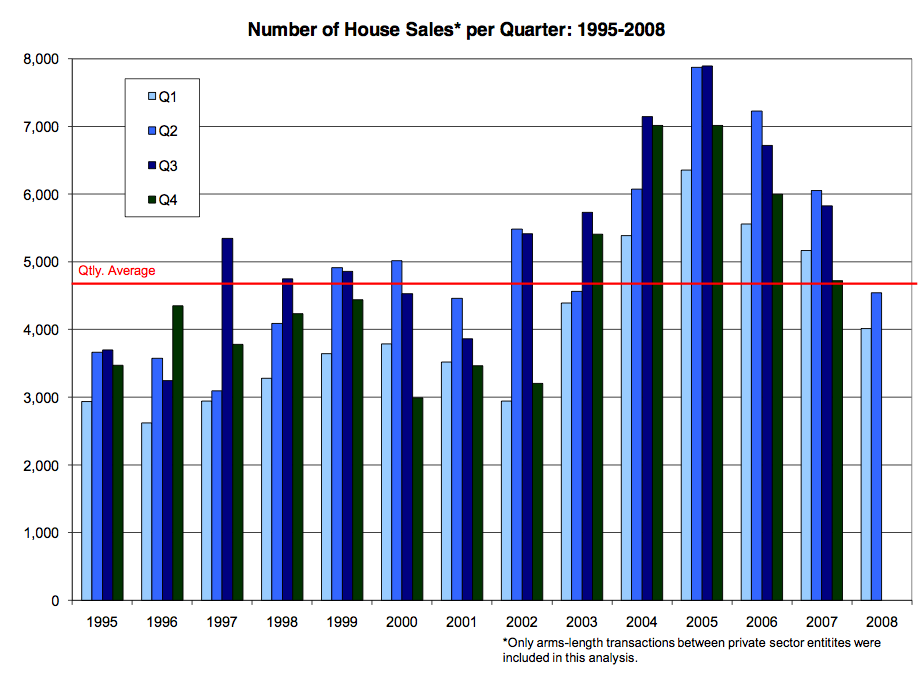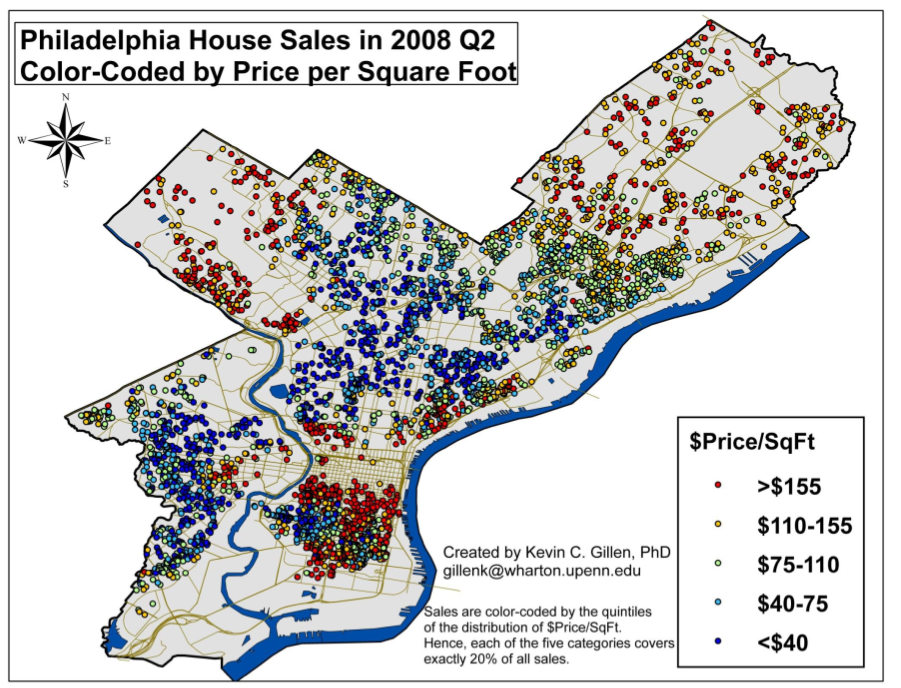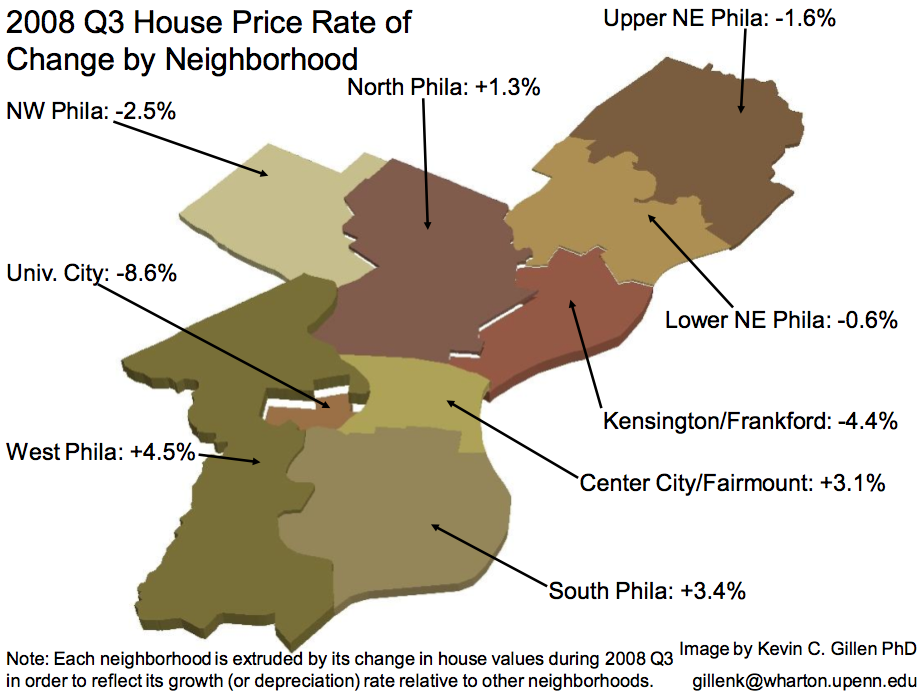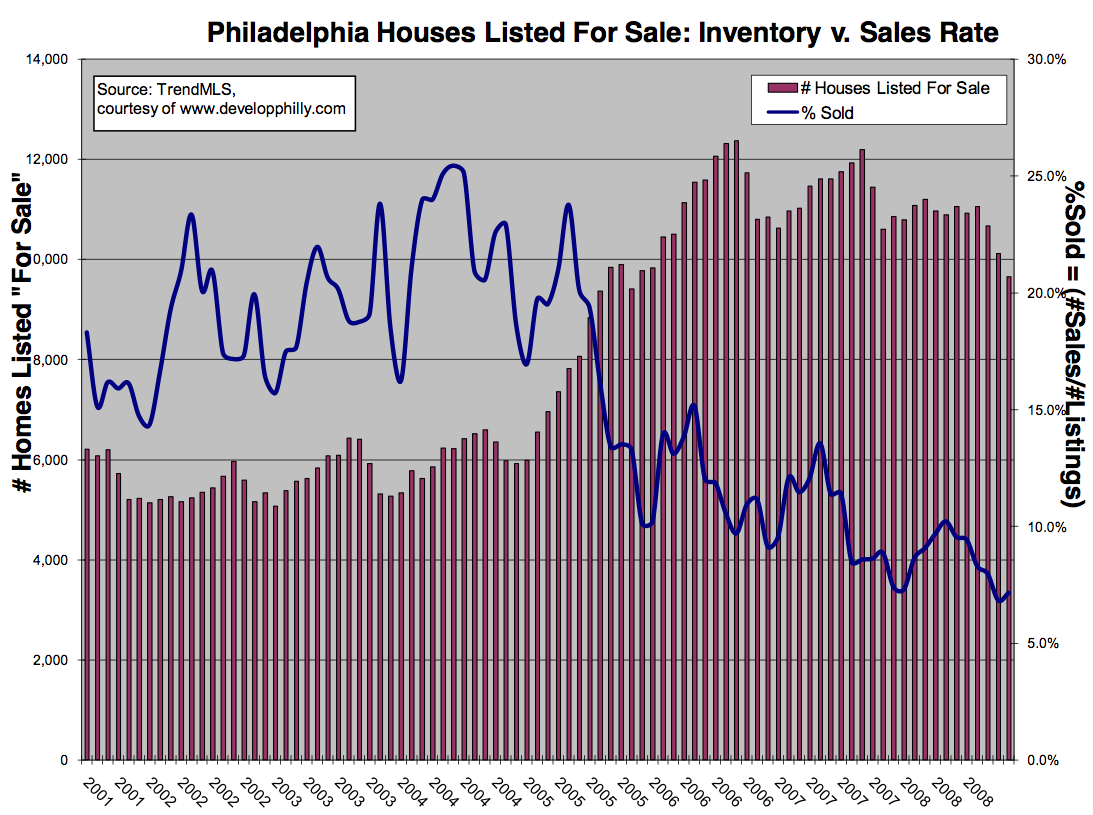This quarterly market report is provided by Dr. Kevin Gillen, an economist at the Real Estate Department of the Wharton School and Fellow of the University of Pennsylvania. He analyzes the Philadelphia real estate market using the city’s real estate database through Hallwatch, a watchdog group. The results are published in a research paper called Philadelphia House Price Indices each quarter as a public service to the Philadelphia real estate community. Here’s his methodology [pdf].
Kevin does a great job parsing out the market and its a pleasure to share his results on Matrix —Jonathan Miller
Download the full report [pdf].
Read the Hallwatch article on the market: Decline in Home Values Accelerates: But city still continues to outperform most other large U.S. metro markets.
>But while the Philadelphia’ market has declined less than many other U.S. cities, the news here is still sobering:
* The number of homes that actually sold under arms-length conditions in Q4 stood at just over 3,400; which was a dramatic 25% drop from Q3 and the lowest level of home sales since 2002 Q4.
* Inventories (homes listed for sale) still stand at all-time high levels. As of December 2008, there were nearly 10,000 houses listed for sale in Philadelphia, which is still well above their pre- bubble average.
* The continued high number of homes for sale combined with a continuously shrinking pool of buyers means homes continue to linger on the market. The average time it took to sell a home in Philadelphia in Q4 rose to 74 days, which is well above the 30-40 days it typically takes in a balanced market.
More discussion concerning the report [Hallwatch.org]. Hallwatch is a private and independently maintained watchdog website that does a lot of in-depth, independent and investigative pieces on city politics, as well as real estate.
One Comment
Comments are closed.






The real leading indicator is inventory and sales trend. Both are trending down, heavily.
Price change is just a lagging indicator.
This reflect the unwillingness or inability of existing homeowners to admit to a lower price. Coupled with the buyer’s unwillingness to raise bids or inability to get financing or justify the price with their income.
It is the traditional “stand-off” between buyers and sellers in many markets. This is also known as the “denial” phase from market psychology.
Other markets have moved way past this phase, and have entered into anger or acceptance phase; Philadelphia is just only now stepping into denial.
This is not good, it bodes that there’s much more price decline to come or much more “stuck” homes. The “Meat” of the price decline, which is necessary to start sales going again, isn’t happening yet.
Maybe if foreclosure starts piling up or job losses starts, then this logjam will be freed.